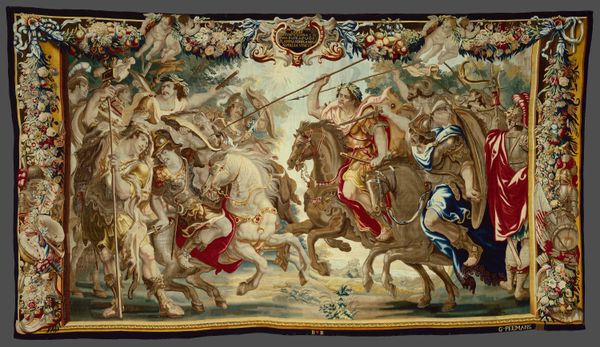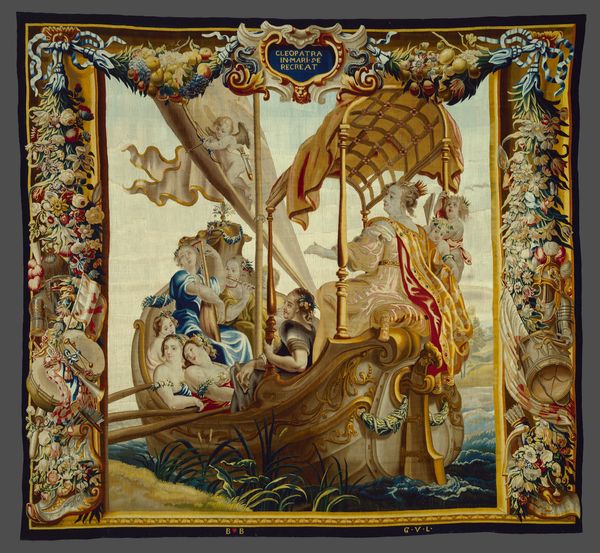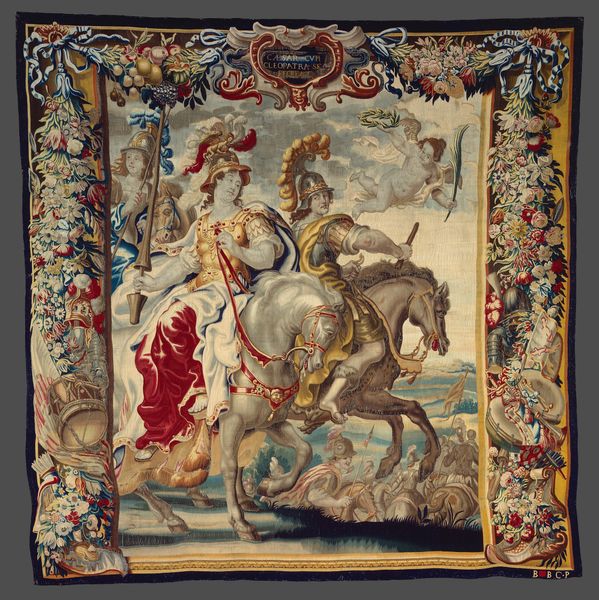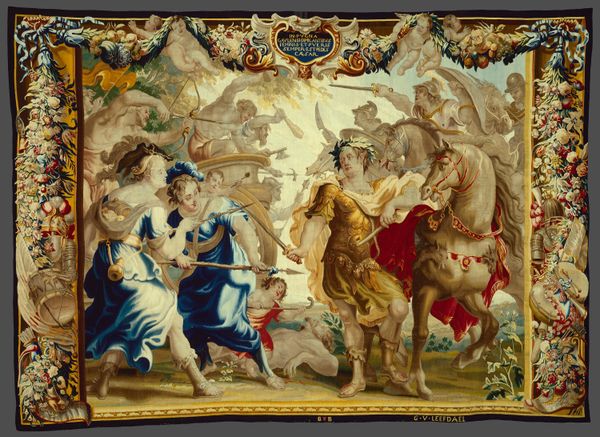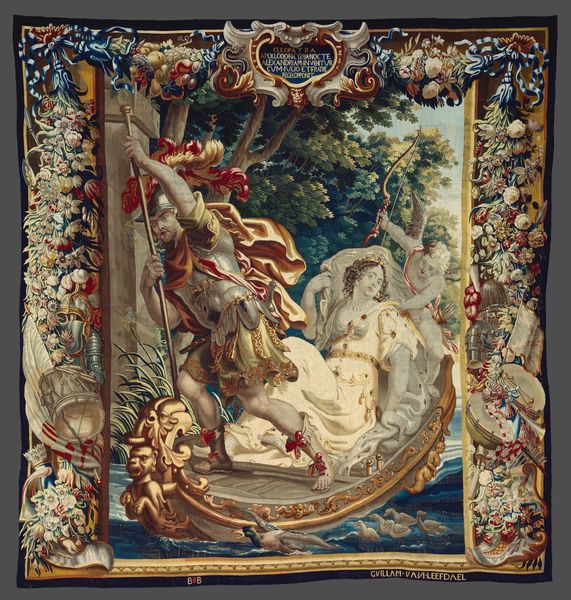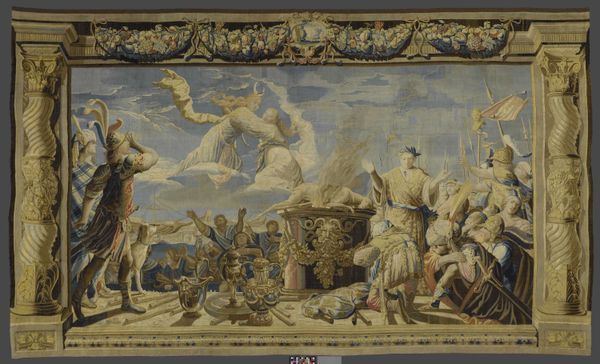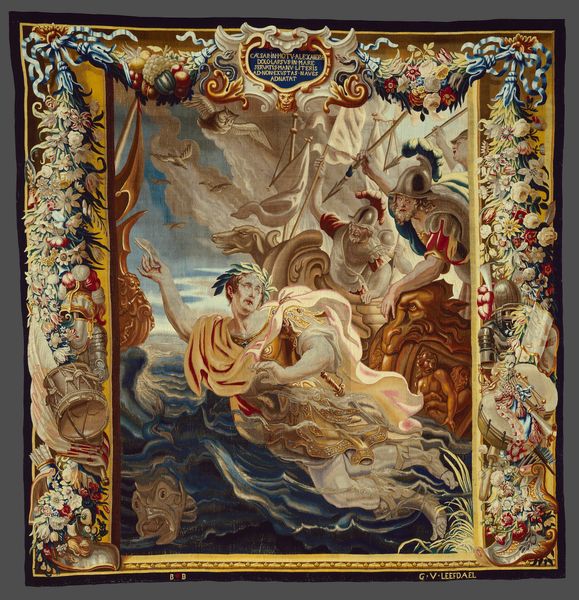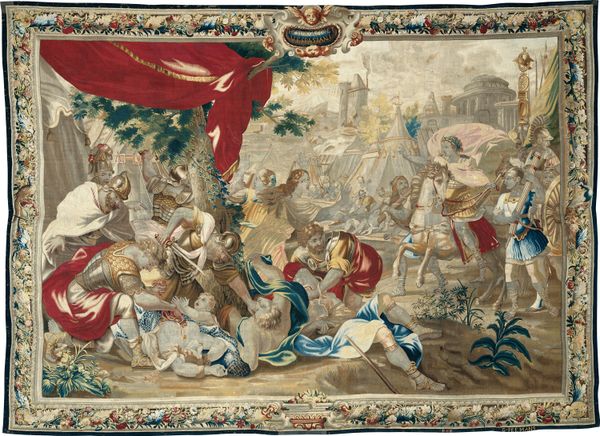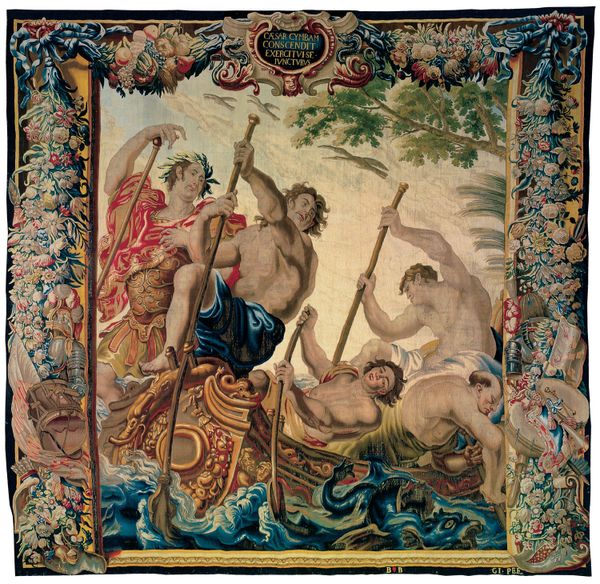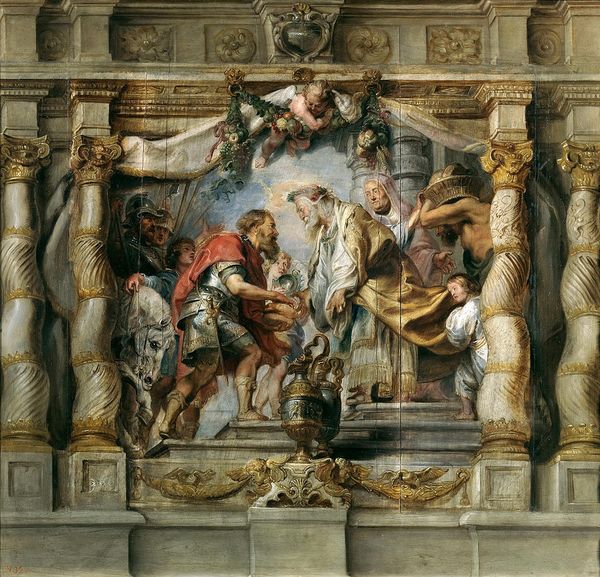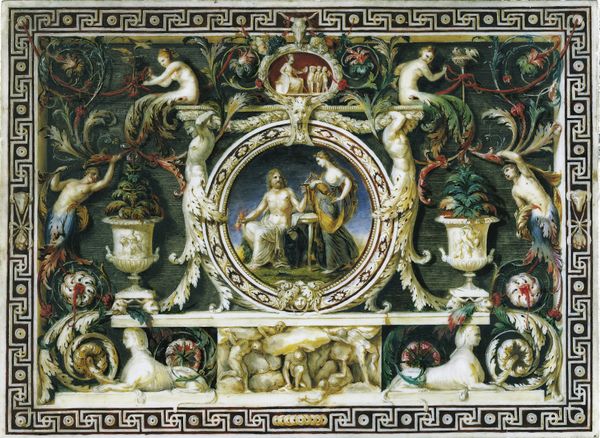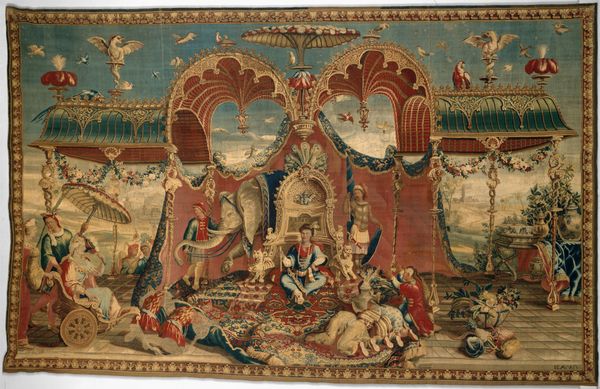
The Battle of Actium from The Story of Caesar and Cleopatra c. 1680
0:00
0:00
oil-paint, textile
#
boat
#
narrative-art
#
baroque
#
oil-paint
#
textile
#
figuration
#
text
#
oil painting
#
naive art
#
14_17th-century
#
history-painting
#
mixed media
Dimensions: 400.6 × 359.5 cm (157 3/4 × 141 1/2 in.)
Copyright: Public Domain
Editor: This tapestry, titled "The Battle of Actium from The Story of Caesar and Cleopatra," was created around 1680 by Geraert Peemans. It’s oil paint on textile. What strikes me is the chaotic energy; the composition really throws you into the heart of this naval conflict. How do you read this piece, especially considering its historical context? Curator: The “chaotic energy” you mention is key. Beyond a mere depiction of a historical event, Peemans presents us with a tableau ripe with socio-political implications. Consider the era. Tapestries like these weren't just decorative; they were often commissioned by the elite to reinforce power, narrate history from a specific perspective, and perhaps most subtly, to comment on contemporary power dynamics by portraying those from the past. What message might this tapestry, showcasing Cleopatra’s defeat, send to its 17th-century audience about female rulers or foreign powers? Editor: So, it’s not just about illustrating the battle, but about controlling the narrative around power, gender, and maybe even colonialism, through a historical lens? Curator: Precisely. The choice to depict this particular event, the stylistic rendering of the figures, and the very medium itself—a costly tapestry—all contribute to constructing a specific viewpoint. Tapestries offered lessons in power, both to those who commissioned them and, implicitly, those who viewed them. Where do you see the artist’s own culture or power influencing the tapestry’s interpretation? Editor: That's a perspective I hadn’t considered. It changes my view entirely. I was looking at it as a historical scene, but now I see it’s about how history is used to shape contemporary perceptions and norms. Thanks for pointing out this perspective. Curator: And thank you for your insights as well! It’s these kinds of conversations that keep history alive and critical.
Comments
No comments
Be the first to comment and join the conversation on the ultimate creative platform.
